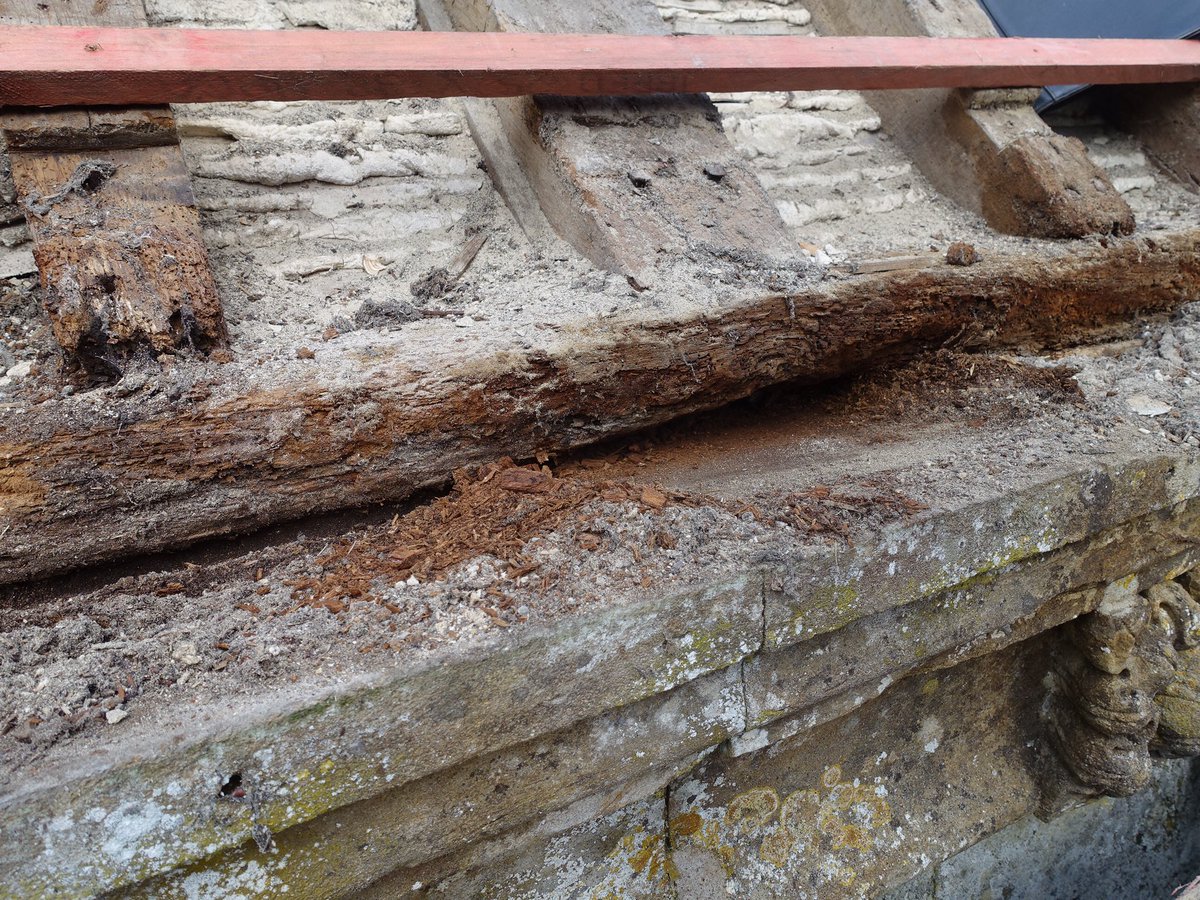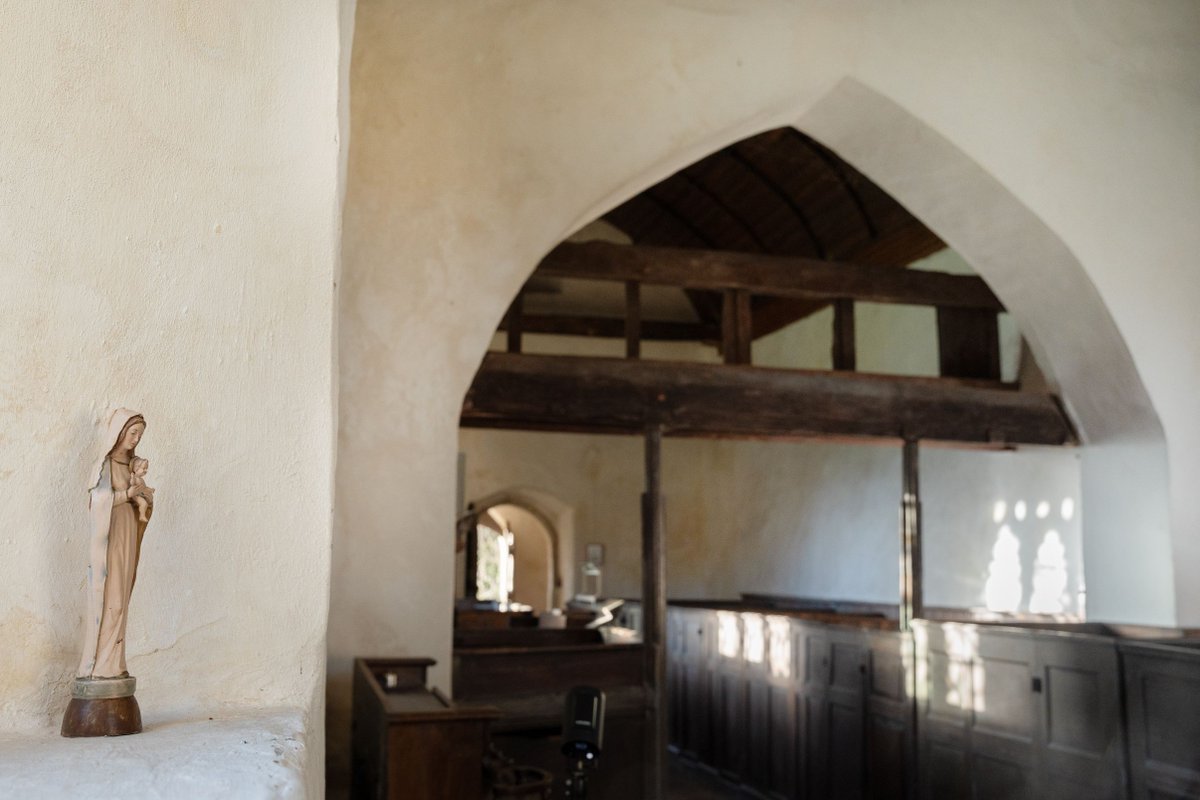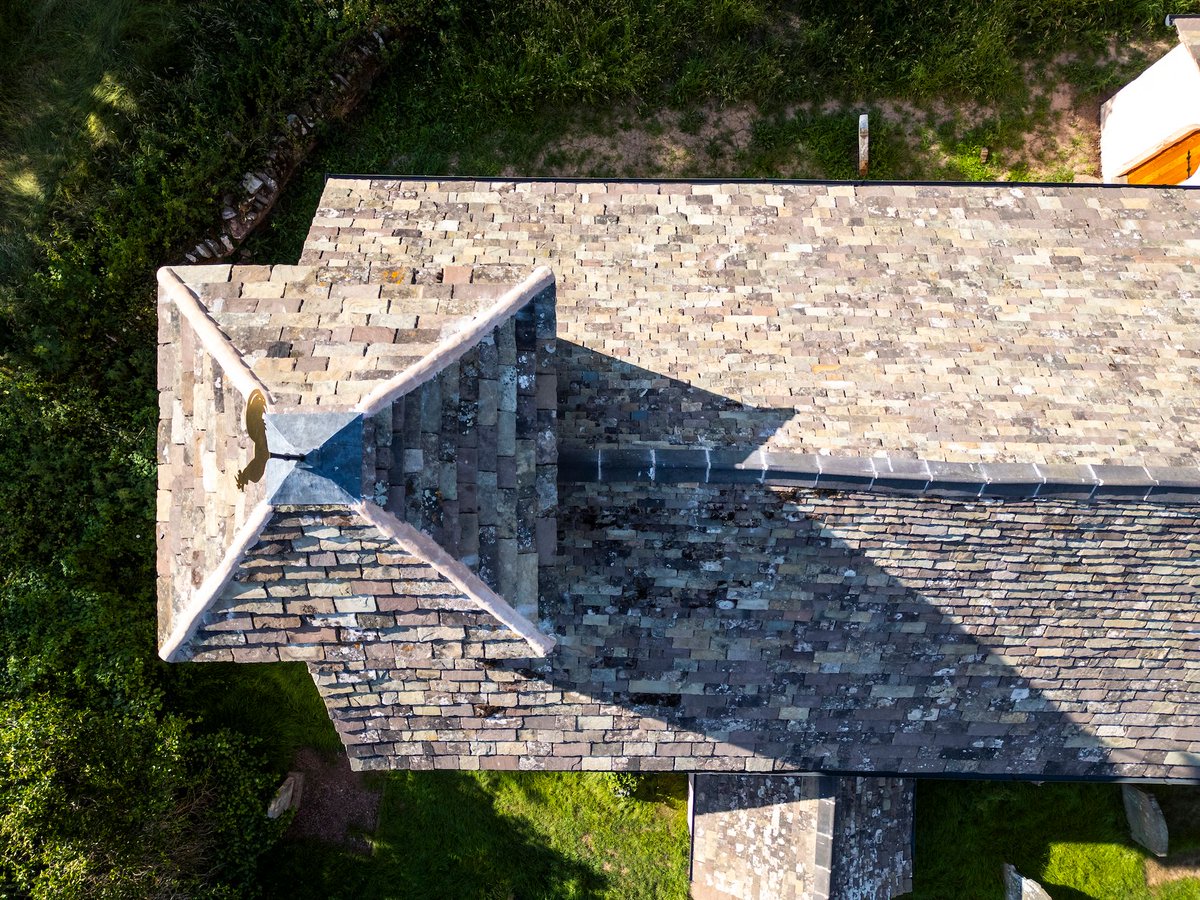We’re delighted that roofing works at St Mary’s, Long Crichel, Dorset are complete. Long overdue, works included repairs to the oak wall-plate, renewing handmade plain clay tiles, installing new hamstone eave slabs and ridge tiles, and reinstating the angel in the apse.
#thread
#thread

The roof at St Mary’s is a king-post truss design, and ranges from 15th century in parts to 1850s in others, as the church was largely rebuilt after a fire in the early 19th century. We found the wall plate to be decayed in places, and new sections were spliced in.
2/
2/

When the builders started stripping the roof, they found that a vast number – far more than anticipated – of the clay roof tiles were cracked, disintegrating, defective. We ordered new handmade clay tiles, and managed to reuse about 50% of the existing tiles.
3/
3/

Several years ago, the lead covering the apse roof was stolen. As is ever the case, rain poured through and damaged the beautiful ceiling and its sculpture - including the corrosion of the ironwork that supported one of four praying angels.
4/
4/

This angel has been missing for as long as we can remember… until, shining a torch into a dusty vestry cupboard of flowering arranging paraphernalia, we glimpsed a pair of praying hands.
Further rummaging revealed the angel’s head.
Hooray!
5/

Further rummaging revealed the angel’s head.
Hooray!
5/


The angel is currently with the stone mason being repaired, and will shortly be instated, along with a newly carved cross for the gable.
We’re all out of money now, but one day, hope to be able to repair and redecorate the interior, and re-connect the electricity.
6/
We’re all out of money now, but one day, hope to be able to repair and redecorate the interior, and re-connect the electricity.
6/

As ever, if you’re able and would like to donate towards our work, you can do so via our website or by texting FFC 3 to 70085 to donate £3.
We are so grateful that the roofing works were supported by the Culture Recovery Fund. #HereForCulture
7/
We are so grateful that the roofing works were supported by the Culture Recovery Fund. #HereForCulture
7/

• • •
Missing some Tweet in this thread? You can try to
force a refresh






















